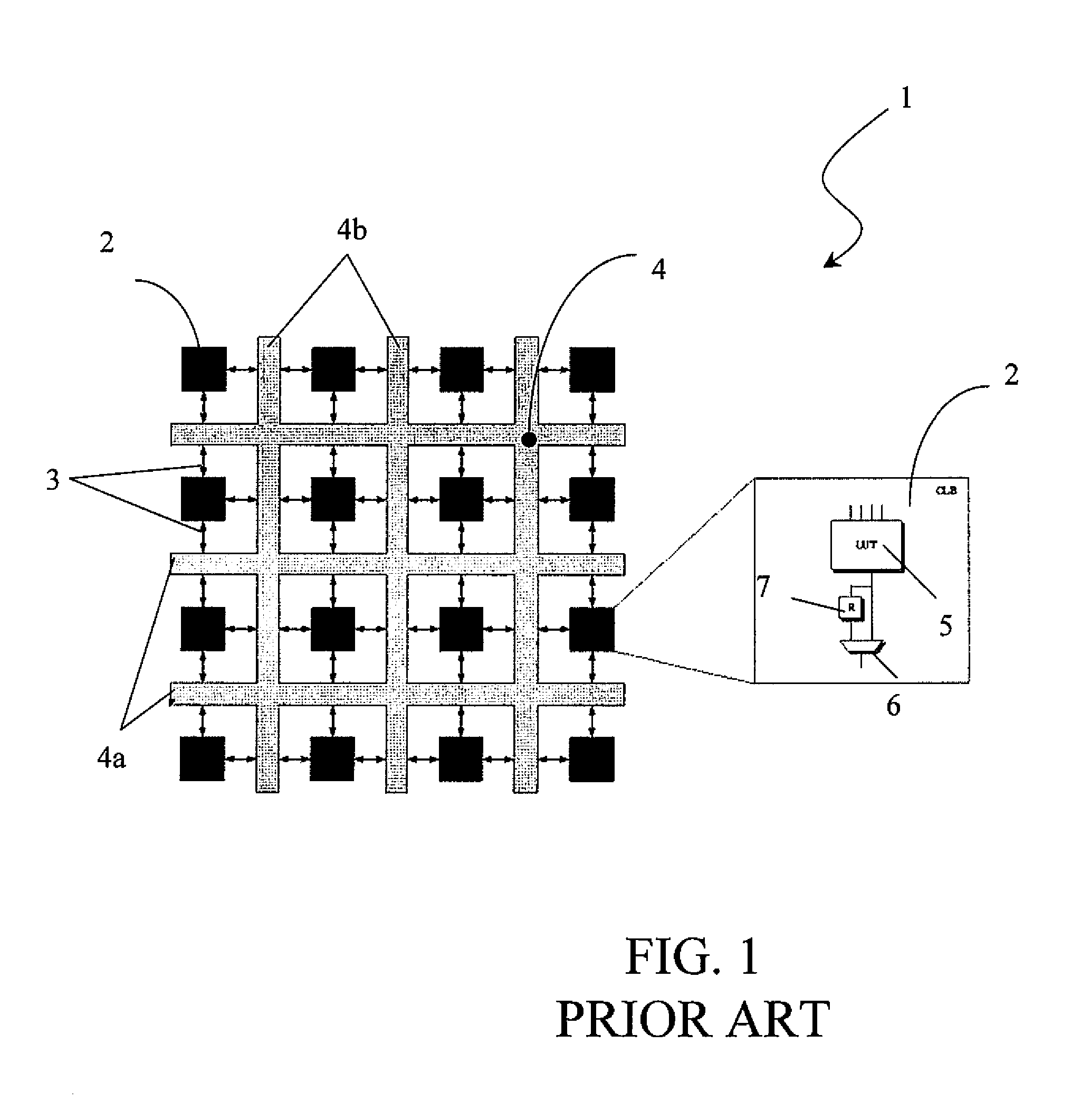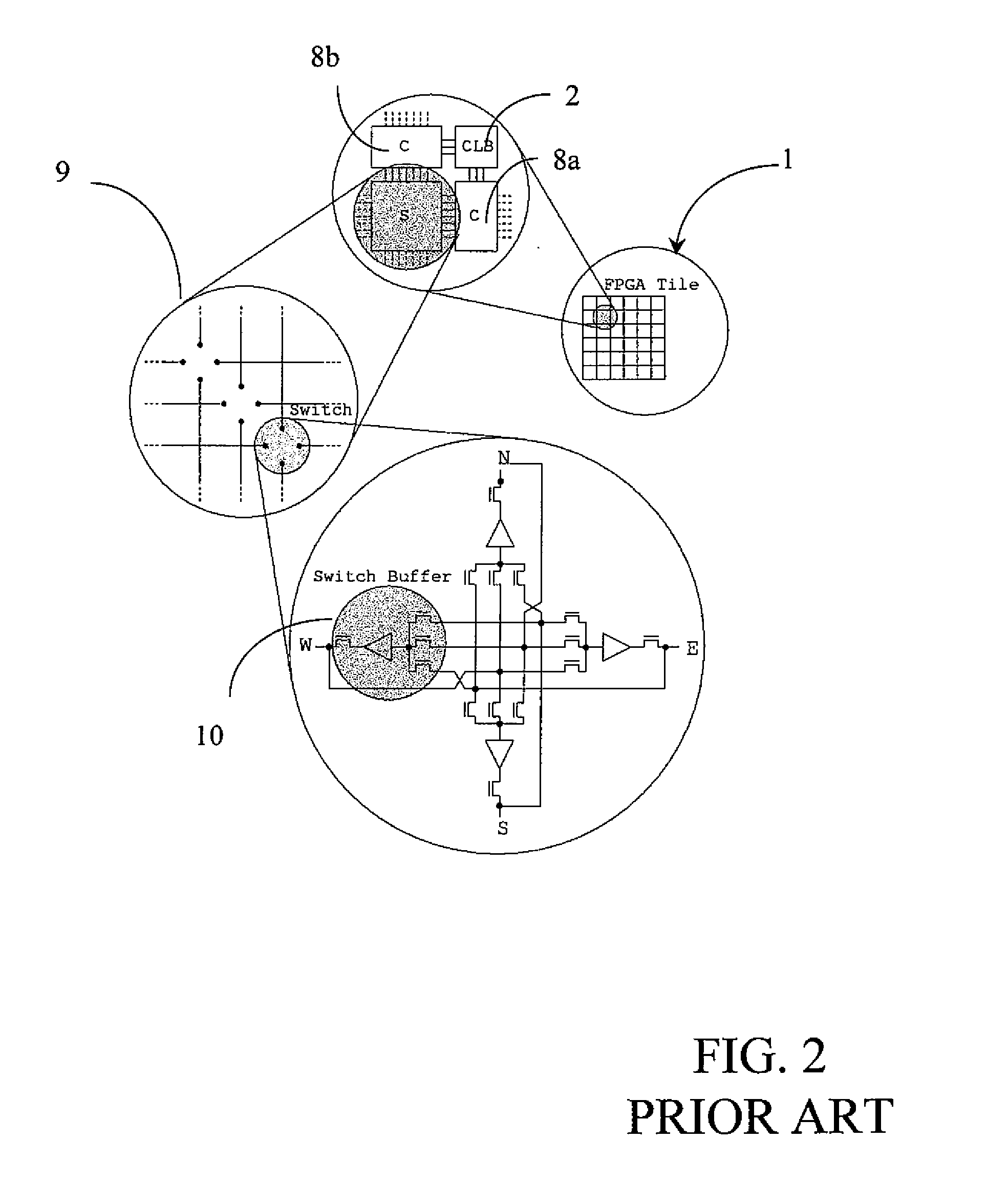Switch block for FPGA architectures
a technology of fpga architecture and switch block, which is applied in the direction of logic circuits using elementary logic circuit components, electrical apparatus, solid-state devices, etc., can solve the problems of static power being the dominant factor in energy consumption, the architecture is affected more heavily, and the integrated circuit leakage current is exposed, so as to reduce the static consumption of the architecture
- Summary
- Abstract
- Description
- Claims
- Application Information
AI Technical Summary
Benefits of technology
Problems solved by technology
Method used
Image
Examples
first embodiment
[0127] With reference to such figures, and in particular to FIG. 5, a switch block realized according to the invention is schematically shown and globally indicated as 20 or Switch1.
[0128] For structurally or functionally equal elements with respect to the switch block described in the Background section, the same reference numbers will be applied.
[0129] As already described, the switch block 20 (Switch1) realizes the connection between a first line L0, a second line L1, a third line L2 and a fourth line L3 and includes:
[0130] a first pass-transistor N0 connected between the first line L0 and a first internal node net0;
[0131] a second pass-transistor N1 connected between the second line L1 and the first internal node net0;
[0132] a third pass-transistor N2 connected between the third line L2 and the first internal node net0; and
[0133] a fourth pass-transistor N6 connected between the fourth line L3 and a second internal node net2.
[0134] In the example shown in FIG. 5, the pass-...
second embodiment
[0149] Also, advantageously according to the invention, the switch block 20 is provided, showing an enhanced driving factor with respect to the Switch1 scheme.
[0150] This second embodiment is shown in FIG. 6, globally indicated as 20 or Switch2. It will be clear from the following description that the switch block 20 (Switch2) scheme has been designed in order to reduce the propagation delay of the switch block 20 (Switch0) scheme.
[0151] The switch block 20 (Switch2) shows a similar structure with respect to the known switch block (Switch0), the detailed description thereof being so omitted for sake of simplicity, only the differences being highlighted.
[0152] In particular, the NMOS transistor N5 of the second inverter 22 is directly connected to the fourth line L3, such that the pull down path of the buffer final stage according to such Switch2 scheme comprises only the transistor N5 itself.
[0153] Moreover, the pull down transistor N3 is substituted by a further pull-up transist...
third embodiment
[0163] Advantageously with the invention, the switch block contribution to the leakage consumption of a FPGA architecture tile becomes negligible with respect to the other blocks. The same circuital scheme can also be applied for the output connect blocks, which cause most of the connect blocks dissipation.
[0164] The penalty to be paid for a low-leakage design is about 25% on the interconnect delay under same driving width conditions. Wider transistors could however be used in order to reduce this gap, all the more that the leakage advantage would remain substantially unchanged.
[0165] The switch block 20 (Switch3) also achieves the best performance, since it reduces the active leakage while keeping steep signal edges.
[0166] From an area occupation point of view, the introduction of the additional pull-down block 23, and in particular of the footer transistor N7 in the switch blocks according to the Switch1 and Switch3 schemes, increases the switch area of 37%, if considering also ...
PUM
 Login to View More
Login to View More Abstract
Description
Claims
Application Information
 Login to View More
Login to View More - R&D
- Intellectual Property
- Life Sciences
- Materials
- Tech Scout
- Unparalleled Data Quality
- Higher Quality Content
- 60% Fewer Hallucinations
Browse by: Latest US Patents, China's latest patents, Technical Efficacy Thesaurus, Application Domain, Technology Topic, Popular Technical Reports.
© 2025 PatSnap. All rights reserved.Legal|Privacy policy|Modern Slavery Act Transparency Statement|Sitemap|About US| Contact US: help@patsnap.com



